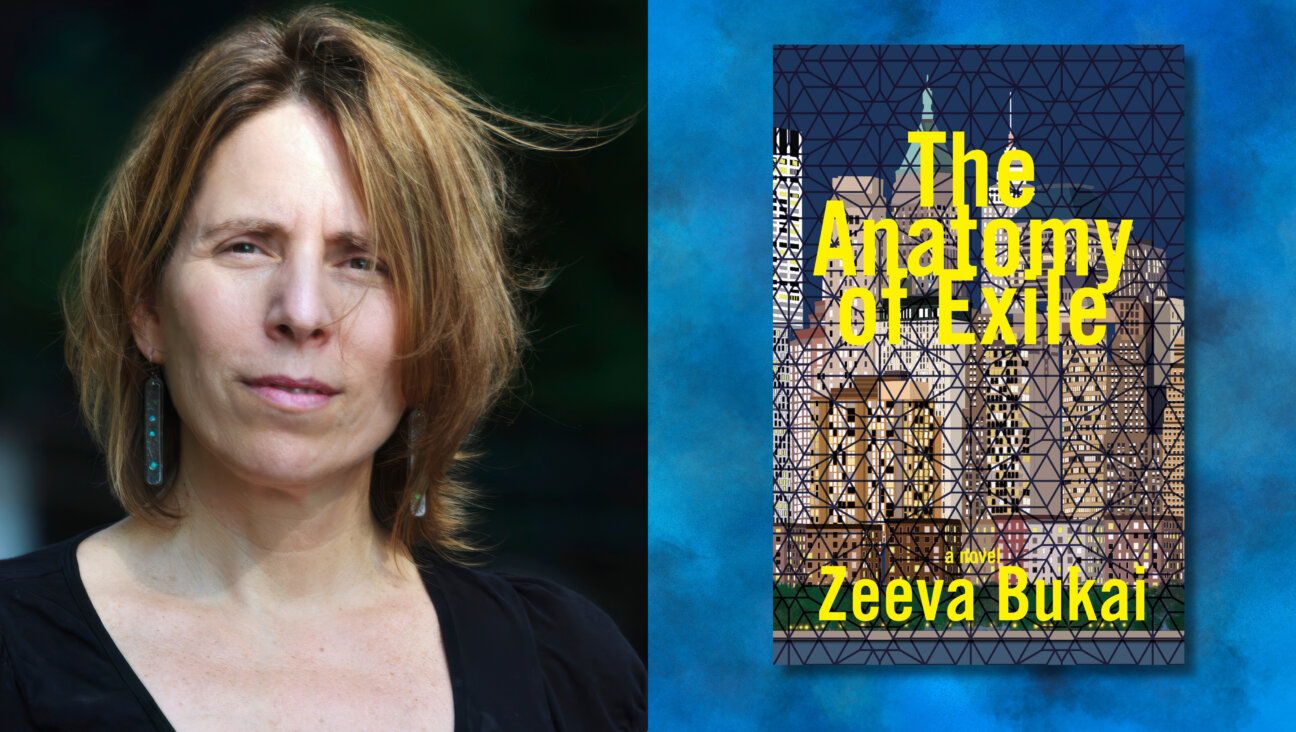‘Neverland’ Producer Searches for a Cure to Son’s Bloom’s Syndrome
In the press notes to the 2004 movie “Finding Neverland,” director Mark Forster ruminates on the “deep human need for illusions and dreams” and “belief in the face of tragedy.”
Producer Richard Gladstein does not offer anything quite so sentimental when I ask him, about one year after the film’s blockbuster success, to muse on its meaning.
Instead he makes three tidy points: First, “Neverland” is more personal to him than any other film done during his career as a Hollywood producer, during which he has worked on some two dozen movies, including “Pulp Fiction” and “The Bourne Identity.” Second, “Neverland” is dedicated to his son, Milo. And third, $200,000 from the film’s Hollywood premiere has gone to the establishment of The Milo Gladstein Foundation for Bloom’s Syndrome, a research foundation (he uses precise, definitive terms to describe his pet science project) that will find a cure or treatment for Bloom’s Syndrome, the rare Jewish genetic disease with which his son was diagnosed in 2004.
Milo Gladstein came into the world small and struggling to breathe. Tiny for a full-term baby, he weighed only 4 pounds and 3 ounces; his esophagus was disconnected and because of that, his skin shone a pale blue.
At 32 days old, Milo left the hospital with spiked blood pressure as a souvenir from an eight-hour esophagus surgery, as well as a septic infection. Reflux caused him to vomit most of what he was fed. Weighing five pounds, he was only several ounces heavier than he had been at birth.
Neither the Gladsteins nor their doctors could explain Milo’s compromised health. Sonograms had been done. Richard and his wife, Lauri — both Ashkenazic Jews and first-time parents — had undergone carrier screenings for the rare Jewish genetic disease Tay-Sachs. No one in the family knew of any history of genetic disease.
It would take another three-and-a-half years before a doctor would suggest the Jewish panel, a blood screening that detects mutations associated with all Ashkenazic genetic diseases, including even those lesser-known disorders.
Like Tay Sachs, Bloom’s is a recessive disorder caused by a gene that does not function properly. Estimated by geneticists at the Mount Sinai School of Medicine in New York to occur in one out of 107 Ashkenazic Jews, the mutant gene — if inherited from both parents — leads to growth problems and immunodeficiencies. Symptoms include short stature, patchy skin coloration, sensitivity to sunlight, sterility, and tendencies toward diabetes and toward bronchial and respiratory infections. Most vexing to Bloom’s sufferers is their radically increased susceptibility to childhood cancers or leukemia.
By the time the Gladsteins were told about the Jewish panel and the possibility that the rare genetic disease was culprit in the case of their son’s mysterious immunodeficiency, Milo knew the phlebotomist’s chair better than most full-grown adults; an extra-small blood pressure cuff sat in a bedroom closet, and a majority of the toddler’s meals were eaten through a feeding tube. Café au lait spots — patches of darker skin that are common signs of Bloom’s in children — had begun to appear on his arms.
“I called and said he has these spots showing on his arms and the geneticists said, ‘Bring him in,’” Lauri Gladstein recalled. “They looked at Milo’s charts again and asked if I had had ever been tested for Bloom’s or had a Jewish panel done.”
“I said no, my screening was only for Tay- Sachs,” she said. “And boom! The test came back positive and everything began to make sense.”
A little more than a year later, Milo is a 4 1/2-year-old Bloom’s child with a penchant for toy dinosaurs and the beach. Since his first enrollment in swimming lessons at the neighborhood pool at age 2, he has chosen a life aquatic: Jumping in waves is an old favorite, and snorkeling his latest obsession. While he cannot be out in the sun (because of increased skin sensitivity and risk of cancer caused by Bloom’s, the Gladsteins restrict beach visits to dusk hours), he cruises his Los Angeles home in diving flippers.
Other hobbies for the petite kindergartener — who at 3 feet 3 inches and 33 pounds is in the fifth percentile for size — include bicycling with training wheels, studying insects and usurping his mother’s yoga mats, a practice he independently pursues through regular classes at a nearby children’s studio. When asked of other passions enjoyed by her eldest son, Lauri Gladstein mentions the Natural History Museum and Gus, Milo’s 3-month-old baby brother. “I just have to tell him not to hug Gus so hard,” she said.
Between yoga and the beach, it’s a wonder the Gladsteins find time to do such things as direct films. Yet to apply the imagery of “Neverland,” the bigger fairy tale might be the couple’s latest creation (excluding three-month-old Gus): The Milo Gladstein Foundation.
In addition to the $200,000 raised at last year’s premiere, the Milo Gladstein Foundation has netted another $500,000 in private donations that will go toward scientific research related to Bloom’s Syndrome.
For about a year before Milo was successfully diagnosed, the Gladsteins treated his small stature with growth hormones. Since discovering Bloom’s is to blame for his growth deficiency, the treatment has been halted on the suspicion that hormone injections increase risk of cancer in Bloom’s children.
“We don’t know how to treat the syndrome yet,” said Dr. James German, a professor of pediatrics at Weill Medical College of Cornell University and head of its Laboratory of Human Genetics. A pioneer of research into Bloom’s, German now sits on the foundation’s board of trustees. “This research has been done with Gaucher Syndrome. It’s been done with Tay-Sachs, but its just beginning with Bloom’s.”
With a goal to find a cure for the rare Jewish genetic disease, the Milo Gladstein Foundation will depend on more than just the cash and glamour of Hollywood to keep momentum going.
“We have begun to succeed with funding and awarding grants,” said Dr. David Rimoin, director of the Medical Genetics Institute and Steven Spielberg chair at Cedars-Sinai Medical Center in Los Angeles. “Now it’s a matter of finding out how to fool Mother Nature.” Like German, Rimoin counts himself as a member of the foundation’s board. He hopes that the Gladstein grants will funnel funds toward research on the malignant interaction between the Bloom’s gene and cancer. “These children suffer from high rates of cancer, and this is what they die of. With these grants we will hopefully find out what is causing this pre-disposition to cancer,” he said.
When asked if she wishes she had taken a Jewish panel test earlier and discovered that she carried the syndrome, Lauri Gladstein paused to shush the son clinging to her leg before replying.
“The second an Ashkenazic patient walks through the door, they should be told about the panel and I do wish I had been told about the panel earlier,” Gladstein said. “Having said all that, I have a gorgeous son and the fact that he has Bloom’s is heartbreaking, but he is a spectacular person and I feel lucky to have him in my life. The fact that we might be able to help him have a long and fortunate life is wonderful.”
A message from our Publisher & CEO Rachel Fishman Feddersen

I hope you appreciated this article. Before you go, I’d like to ask you to please support the Forward’s award-winning, nonprofit journalism so that we can be prepared for whatever news 2025 brings.
At a time when other newsrooms are closing or cutting back, the Forward has removed its paywall and invested additional resources to report on the ground from Israel and around the U.S. on the impact of the war, rising antisemitism and polarized discourse.
Readers like you make it all possible. Support our work by becoming a Forward Member and connect with our journalism and your community.
— Rachel Fishman Feddersen, Publisher and CEO























